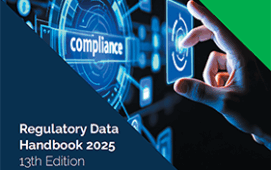
Getting customer data right has been a problem for financial institutions for many years, but it is beginning to ease as regulation drives data aggregation underpinned by data governance, data standards emerge, and technologies replace manual processes. Getting management buy-in to improve customer data has also moved on and become more persuasive as conversations about regulatory compliance have yielded to discussions about business benefits and cost savings.
During a fireside chat at A-Team Group’s recent Data Management Summit Virtual, Lorraine Waters, CDO at Solidatus, talked to Allie Harris, CDO for global banking and markets at Scotiabank, and an expert and practitioner in the customer data space.
Talking first about what is changing the data that needs to be captured around customer information, Harris noted the continuing influx of regulation requiring data sourcing and management for compliance, and equally importantly growing need to provide accurate data to the business. She touched on the customer 360 concept as a means of ensuring all business lines that are working with the same customers have the same view of the information and it is not siloed for business purposes.
Describing Scotiabank’s approach to client data, she said: “In my shop, we have a large platform that brings our client data into one place, but the biggest job we have is really not the technical play, it’s all the processes that are creating the data and aligning it. If, say, you are doing KYC in three businesses, you can have a lot of systems that are silos. So, we bring these together, and at the same time, from a data governance standpoint, we ask, Who is running your business processes? Whose are those processes? Are they in any alignment with any other areas’ processes? So, the long story short is we’ve got a great platform for aggregation, for everything we need to do with client data, but underpinning all of that is the governance process, client identification and breaking the data down to critical data elements.”
Over the past 10 to 15 years, additional data needed includes the LEI, and most recently in the US. a requirement for beneficial ownership data under the Corporate Transparency Act. Canada has a similar requirement.
As lead of the Canadian delegation to the ISO and the convener of a working group on natural persons identification, Harris notes the LEI number that identifies a company, and says the group is looking at the Natural Person Identifier (NPI), which identifies a person and could be used here. She also touched on digital identity, and whether this would be led by banks or jurisdictions, and added: “What we do know is that we are going to be able to put these things together in a way that we haven’t previously, and this will give an amazing amount of business value if we capture it correctly.”
Responding to a question from Waters about the use of industry standards in customer data management, Harris cited not only the NPI, but also the emerging unique product identifier (UPI), classification of financial instruments (CFI), and the entity legal form code list that allows connection and aggregation of company form descriptors in different jurisdictions such as the LLC in Canada, SA in France and GmbH in Germany. She comments: “All of these new standards are things we are taking up and utilising as quickly as we can.” The benefits include the ability to deepen relationships with clients.
From a business perspective, Waters and Harris agreed that while compliance is important, the way to win business buy-in for projects is to first show positive business outcomes. One question is, ‘when you’ve got a process that you’re aligning, can you enhance the data within the process as opposed to just remediating it for regulatory purposes’.
Answering an audience question on the technologies used by Scotiabank to help it get customer data right, Harris listed semantic ontologies and knowledge graphs to reach into data and make connections that were not previously possible using data warehouses and data lakes; and optical character recognition (OCR), natural language processing (NLP), and robotic process automation (RPA) to pull data out of documents. She also noted gains from mastering client data using machine learning and AI, and using metadata and semantic ontologies for data ingestion, placement and consumption, which can accelerate traditional mapping and modelling. She concluded: “Machine learning is on the continuum to AI, so as we get better machine learning, it can then start to inform some of our truer AI models.”
Subscribe to our newsletter




